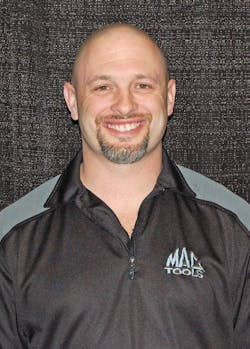Little League biz review
Where’s my hat? Coach, can I pitch? Who has my glove? Can I play shortstop, Coach? Anyone seen the catcher’s mitt? Why are there only eight players on the field?
Ever have the opportunity to coach sports that involve kids? If you have, then you can relate; for those of you who haven’t, it might be best described as trying to harness the energy of hurricane-force winds to blow out a single candle — without disrupting the cake! Over the past few years of coaching Little League, I have learned a great deal and even a few things about baseball.
Running through the day, I look forward to getting to the field on time for practice or a game and to warming up the kids and seeing their energy and hearing their excitement over what would unfold in the next couple of hours. In the early season, there were many things that needed to be ironed out, from who plays what position best to when to use certain plays to how to conduct ourselves in the dugouts and on the field.
In the beginning, the dugout was a nightmare to maneuver through much less find anything. Chaos was the norm between innings and at times would leave the kids frustrated, causing them to lose focus and that would carry on to the field.
It didn’t take long to have a sit down on the grass at practice and cover some of the things that were slowing them down, and none of our discussion was about talent.
Our focus started with simple tasks that were overlooked and created a lot of the confusion between each inning. We started with everyone writing their name on the underside of their hats, then where bats were to be kept, gloves had their place above the bench, water bottles were to be marked and put on top of the wall with the gloves, shoelaces double tied, shirts tucked in, and, finally, when asked to take a position to run out on the field without question or dismay and understand it takes every position to win a game.
Starting at the next game, the dugout had transformed and everything had its place — very nice!
Once the team had become organized in the dugout, we worked on other aspects that caused confusion on the field. This was much easier because we only needed them to do something they were really good at — talking! The team did very little communicating before or during a play causing confusion and sometimes flared tempers. A quick talk about the importance of communication during a play between teammates and calling out the status of the inning keeps everyone informed and that allowed them to look ahead.
Through our talks, we discovered that having a system, communicating and looking ahead was just as valuable as talent.
When you think about it, a lot of what turned our Little League team around can be implemented in our mobile businesses for positive gains. Tasks that seem simple enough are often overlooked or not thought of as important.
Having a system or routine sounds logical enough, but is it well planned or is it just happenstance. Review the system that you currently follow throughout your day and question whether it could use a little tweaking — or a major overhaul. Remember that the smallest change could reap the largest gain. Having an efficient method that is followed every day allows more time to be spent in the field with your customers and making money.
Communication is key in any aspect of life; be mindful that it is a two-way street. We spend the majority of our day talking with customers, so we should be pretty good at it right? Talking is only half of the equation, listening is the other half.
Our customers are constantly giving us the information that we need, but how is that handled? Ever had a request from Customer X and then the following week when asked about the request had that sinking feeling as you realized you dropped the ball? When Customer X is inquiring about a certain product or places an order with you, how that task is handled is part of communication. Our customers notice how often we make notes and expect results. Creditability is earned on that performance.
Without a crystal ball, looking into the future is tough — but not impossible. Most of us have been doing this for awhile and know how the game goes, but are we looking ahead on how to best approach the next play? Time spent driving between stops is the same as going into the dugout after an inning, reviewing where you are and planning the next move.
Take a few moments to review how your day is structured. Is it organized or chaotic? A new inning is about to begin!
Joe Poulin is a Mac Tools distributor based in Gray, Maine. Send feedback for Joe care of [email protected].
